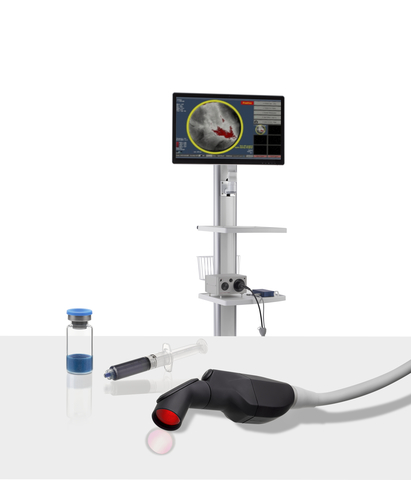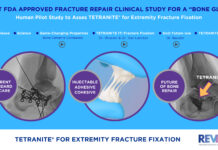NEWTON, Mass.– Lumicell, Inc., a privately held company focused on innovative fluorescence-guided imaging technologies for cancer surgery, today announced that results of the Investigation of Novel Surgical Imaging for Tumor Excision (INSITE) pivotal trial have been published online in NEJM Evidence and will be presented at the American Society of Breast Surgeons (ASBrS) annual meeting. The results highlight the safety and effectiveness findings of the company’s pivotal trial of its investigational Lumicell™ Direct Visualization System (DVS) to identify residual breast cancer following removal of the primary specimen during initial lumpectomy.
In the INSITE trial, the Lumicell DVS identified cancer remaining after the standard of care lumpectomy procedure in approximately 8% of patients. In the majority of these patients, standard pathology assessment had deemed margins negative and would have left this tumor behind. The additional residual cancer identified by the Lumicell DVS measured 1-13 mm and included areas of low- and high-grade tumor in patients across all tumor types. In addition, 14.5% of patients with positive margins were converted to final negative margins, potentially avoiding a second surgery. The study also evaluated the safety of Lumicell’s investigational optical imaging agent LUMISIGHT™ (pegulicianine), with a serious adverse event rate of 0.5%, similar to that of other contrast agents.
“The results of the INSITE trial suggest that a more complete breast cancer resection may be achieved with the Lumicell DVS,” said Barbara Smith, MD, PhD, director of the Breast Program at Massachusetts General Hospital, professor of surgery at Harvard Medical School and lead investigator of the INSITE clinical trial. “Given the low complication rate, minimal added operative time and, most importantly, the discovery of additional cancer left behind after a lumpectomy, the Lumicell DVS has the potential to be a critical adjunct to enhance standard practice for breast cancer patients.”
The standard of care for lumpectomy surgery involves breast surgeons and pathologists examining the margins of excised tissue to infer whether any residual cancer remains in the breast cavity. Until now, surgeons have had no way to look inside the lumpectomy cavity to find and remove residual cancer during the initial lumpectomy, making it challenging to consistently achieve a complete cancer resection. As a result, 20-40% of lumpectomies have positive margins only identified days after surgery, necessitating a second surgery to obtain clear margins.1,2
“The Lumicell DVS is the first technology designed to enable intracavity examination during the initial lumpectomy surgery, and results of the INSITE study provide evidence of its ability to enable removal of additional residual cancer,” said Jorge Ferrer, PhD, senior vice president, clinical research and strategy at Lumicell, and co-inventor of the technology used in the Lumicell DVS. “We believe that publication of this study in a leading medical journal like NEJM Evidence is a testament to the quality of the research and potential of the Lumicell DVS to improve care and outcomes for breast cancer patients.”
The FDA granted LUMISIGHT Fast Track designation and the Lumicell DVS Breakthrough Device designation in recognition of the potential important benefit of identifying residual cancer during the initial lumpectomy. The New Drug Application (NDA) for LUMISIGHT was submitted to the FDA in March 2023 and the Premarket Application (PMA) for the Lumicell DVS was submitted to the FDA in April 2023.






